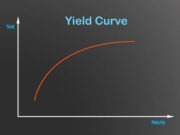
Homeowners insurance is a critical consideration for anyone purchasing or owning a home. While it offers financial protection against unexpected disasters, theft, and liability, many homeowners wonder whether it is legally required. Unlike auto insurance, which is mandatory in most states, homeowners’ insurance can operate under different rules. Understanding these requirements and the risks of going without coverage can help homeowners make informed decisions.
Read on to learn some answers to popular homeowners insurance questions.
Is Homeowners Insurance Legally Required?
Unlike car insurance, no federal or state law mandates homeowners’ insurance for all property owners. However, lenders almost always require it when a mortgage is involved. Banks and mortgage companies must protect their investment, meaning homeowners with a loan must carry out a policy meeting the lender’s minimum coverage standards. For those who own their homes outright, insurance becomes optional, although highly advisable.
Furthermore, according to experts like Maryland Homeownership, homeowners insurance can safeguard one of your most valuable assets, providing peace of mind against unforeseen events. Even without a legal obligation, the financial risks of skipping coverage can be substantial.
Why Do Lenders Require Homeowners Insurance?
Mortgage lenders can impose insurance requirements to mitigate risks. If a home is damaged or destroyed, the lender needs assurance that funds are available for repairs or rebuilding. A standard homeowners insurance policy typically includes:
- Dwelling coverage: Dwelling coverage can safeguard the physical home, including walls, roof, and built-in systems, against damage from fire, storms, or other covered perils.
- Liability coverage: Liability coverage can pay legal fees, medical bills, and settlements if a guest is injured on your property and suits you.
- Personal property coverage: Personal property coverage can compensate for losses due to theft, fire, or other covered perils, protecting furniture, electronics, clothing, and other valuables.
Without insurance, a homeowner might default on the loan, leaving the lender with a devalued asset.
What are the Consequences of Not Having Homeowners Insurance?
For homeowners with a mortgage, failing to maintain insurance can trigger a force-placed insurance policy. Lenders can purchase this coverage on the homeowner’s behalf, often at a much higher cost and with limited protection. Additionally, homeowners can risk foreclosure if they consistently neglect insurance requirements.
If you’re without a mortgage, going uninsured means bearing full financial responsibility for repairs, replacements, and legal claims. Natural disasters, fires, or theft could lead to devastating out-of-pocket expenses.
What are the Different Types of Homeowners Insurance Policies?
Not all policies are the same. The most common types include:
HO-3 Policy
The HO-3 policy is the most common homeowner’s insurance plan, offering broad protection for the dwelling. It covers the home’s structure against all risks unless specifically excluded (such as floods, earthquakes, or neglect). Meanwhile, personal belongings like furniture, electronics, and clothing are only insured against named perils, such as fire, theft, or vandalism.
HO-5 Policy
The HO-5 policy is the most extensive homeowner’s insurance option, providing “open-peril” (all-risk) coverage for both the dwelling and personal property. This means it protects against all threats unless explicitly excluded in the policy. Unlike the HO-3, which only covers personal belongings for named perils, the HO-5 offers broader protection for high-value homes and possessions, including accidental damage.
HO-6 Policy
The HO-6 policy is tailored specifically for condominium owners, filling critical gaps left by the condo association’s master insurance. While the association’s policy typically covers the building’s exterior and common areas, the HO-6 protects the owner’s personal belongings, interior fixtures like flooring, cabinets, and built-in appliances, and liability claims within the unit.
HO-4 Policy
The HO-4 policy, commonly known as renters’ insurance, is designed exclusively for tenants leasing a property. While the landlord’s insurance covers the physical building, the HO-4 policy safeguards the renter’s personal belongings, such as furniture, electronics, and clothing, against covered perils like theft, fire, or vandalism.
What are Additional Coverage Considerations?
Standard policies may not cover certain perils, such as floods or earthquakes. Homeowners in high-risk areas often need separate policies or endorsements. High-value items like jewelry or art may also require scheduled personal property coverage.
How Much Homeowners Insurance Is Needed?

Adequate coverage depends on several factors. These include:
- Replacement cost covers rebuilding the home with similar materials at current prices, excluding land value, unlike market value which includes location and demand.
- Local construction costs reflect regional labor rates, material prices, and building code requirements, directly impacting how much it costs to rebuild a home.
- Personal belongings value refers to the total worth of furniture, electronics, clothing, and other possessions covered under a homeowners insurance policy.
Underinsuring can lead to significant financial gaps, while over-insuring results in unnecessary premiums. Consulting an insurance agent can ensure proper coverage levels.
What are the Different Ways to Save on Homeowners Insurance?
While insurance is essential, there are ways to reduce costs. These include:
- Bundling policies combine home and auto insurance with one provider, typically securing discounted rates and simplifying payments while maintaining comprehensive coverage.
- Increasing deductibles can reduce monthly premiums but means paying more upfront when filing a claim, balancing short-term savings with higher potential out-of-pocket expenses.
- Installing safety features such as smoke alarms, burglar alarms, or storm shutters can lower premiums by reducing risk and preventing costly claims.
By considering these strategies, you can save money on your homeowners insurance in the long run.
Final Thoughts
Though homeowners’ insurance isn’t legally required for all, it remains a vital safeguard. Mortgage lenders enforce it, and even paid-off homeowners benefit from its protections. By keeping the information mentioned above in mind, you can prevent financial hardship in the event of a disaster.

































